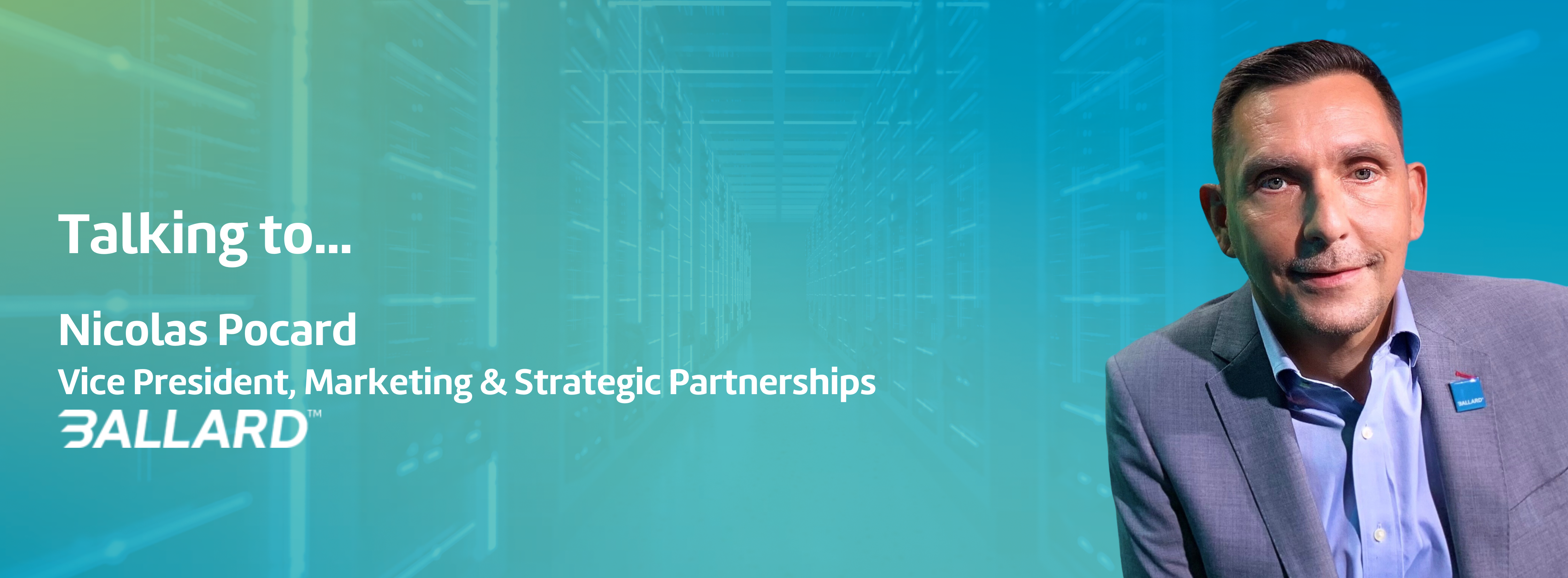
As climate change increases the frequency and severity of natural disasters, the need for emergency backup power grows exponentially as a measure to ensure energy security. Recent occurrences have posed a major risk to essential power and communication infrastructure – including interruptions to the grid – within communities worldwide.
In a interview with industry publication H2View, Ballard Power Systems’ Nicolas Pocard, Vice President, Marketing and Strategic Partnerships, discusses how the increasing frequency and severity of climate change-induced incidents is driving an exponential need for backup power solutions.

Data centers are essential in the modern day – ensuring reliable, secure, and scalable data storage and retrieval. Sharing access to applications and data using complex networks, these facilities centralize an organization’s processes and provide an imperative platform for day-to-day operations in the modern world.
The impact of climate change cannot now be ignored, and incidents like hurricanes, storms and forest fires are now regularly and severely impacting the grid. A recent example saw Hurricane Beryl wipe out electricity in Houston, Texas for two whole days – causing significant impact to a city with a population in excess of 2m people.
With more and more widespread fires and hurricanes disturbing the grid and demonstrating its fragility, critical infrastructure, such as data centers, are now essential in supporting the power supply of towns and cities in areas that experience the worst and most frequent outages.
Today, backup power is necessary as the grid becomes overloaded, and even when there is no natural disaster, the grid cannot provide 1% of the energy all the time to data centers. During Hurricane Beryl, Houston-based data center provider, Lumen Technologies, experienced service disruptions due to the widespread power outages, forcing the firm to resort to diesel backup generators.
Ballard has now collaborated with the likes of Microsoft to undertake hydrogen fuel cell data center backup trials - and it is clear that data providers must now look to implement cleaner alternative solutions.

Traditionally, backup power is supported by diesel generators. There is the potential for megawatts of diesel generators installed at data centres - but with companies across the world now trained on ESG objectives to tangibly reduce emissions, this setup presents a considerable problem. Having an alternative, carbon-friendly technology available to these organizations is an important option.
Different fuel cell technologies are better suited for different applications. For example, proton-exchange membrane (PEM) fuel cells are the perfect fit for backup power, with solutions producing electricity quickly, and are designed to enable rapid ramping up or down of the system.
Whenever you have an intermittent need of a secondary power source for backup power or to supplement the power when the grid isn’t there, that is where PEM fuel cell plays its role. They can reach full power in less than a second and combine with uninterrupted power supply systems (UPS).
While the potential for hydrogen in this sector is clear, the scaling up in industry-wide utilization of fuel cells needs to happen now. To provide an idea of scale, a fuel cell bus needs around 70-100kW of fuel cell power, a locomotive in the U.S. may require 1-2MW to operate effectively.
Data centers can deliver support for 100MW. So, we need to scale up the fuel cell - which is achieved by putting more stacks together. At Ballard, we are working on start-up building blocks, maybe over half a MW, that we can put together and eventually create those units of multiple MW.
On-site storage of hydrogen is a challenge. Ballard is currently working with an ecosystem partner to explore what the ideal solution to store a large amount of hydrogen can be, required to provide between 12-48 hours of backup power.
Following the Microsoft collaboration, Ballard announced a partnership with Vertiv in June, to focus on the development of backup power applications for critical infrastructures and data centres.

As an infrastructure provider, Vertiv is especially focused on power and climate control infrastructure for data centers. Ballard's partnership with Vertiv is very important because it provides a significant opportunity to marry all the expertise of the requirements for data centers with expert knowledge on fuel cell technology.
Ballard is investigating how we can optimize the use of fuel cell modules in a data center solution, which involves a lot of integration work, testing and scaling up. This involves defining the optimum building blocks, whilst also leveraging demand from multiple markets to make sure fuel cell cost can be driven down.
Ballard's strategy is to aggregate volumes and demand from different markets, such as trucks, buses, locomotives and data centers. This will subsequently increase the volume of production and create more cost-effective solutions across myriad market verticals.